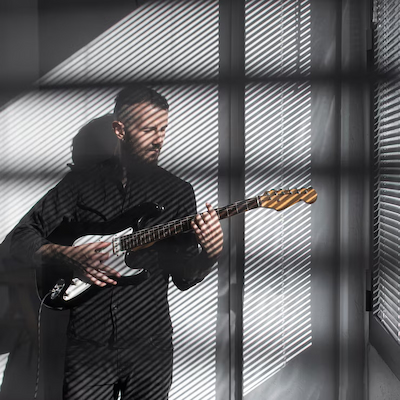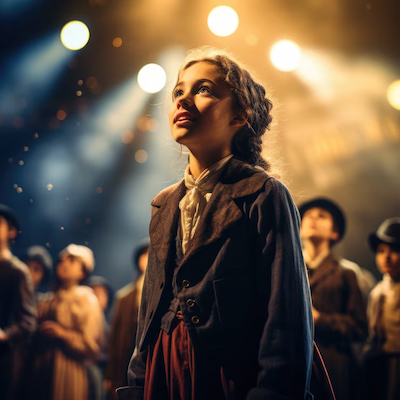
Music has always played a fundamental role in the arts, especially in scenic and choreographic performances. From ancient times, when dances were accompanied by drums and flutes, to the present day, where technology allows for an infinite range of sounds, music and dance are intertwined in an inseparable way. The combination of sounds and movements creates a unique sensory experience capable of touching the audience in deep and emotional ways. This symbiotic relationship between music and dance not only enriches the performance but also helps tell stories and convey emotions more effectively.
Furthermore, music can be seen as the soul of the scenic performance. It sets the mood, defines the rhythm, and guides the dancers’ movements. Through music, choreographers have the opportunity to explore different dynamics and textures, allowing dance to be expressed in innovative and impactful ways. Music’s ability to evoke feelings and create atmospheres is a powerful tool that transforms the artistic experience, making the audience emotionally connect with the narrative presented on stage.
How Interactions Between Music and Dance Work in Scenic Performances
The interactions between music and dance in scenic and choreographic performances function as a constant dialogue, where each element influences and enhances the other. Music establishes a rhythmic base that guides the dancers’ movements, allowing them to express themselves fluidly and cohesively. When the music is well-chosen and integrated, it not only complements the dance but also enhances it, creating a synergy that captures the audience’s attention. This connection is essential for the message of the performance to be conveyed clearly and impactfully.
Another important aspect is how music can shape the narrative of the dance. Through different musical styles, choreographers can evoke specific emotions and guide the interpretation of the dancers. For example, a soft and melodic piece can inspire delicate and fluid movements, while a strong and fast beat can incite energetic and vigorous steps. This relationship between music and movement is vital for building a story that resonates with the audience.
In addition, improvisation plays a crucial role in the interactions between music and dance. In live performances, dancers’ ability to respond to the music in real time can create unique and unexpected moments that enrich the scenic experience. Live music, in particular, allows for a flexibility that can lead to dynamic and exciting interpretations, where dancers feel free to explore new paths and possibilities in their expression.
Lastly, the interactions between music and dance are also influenced by cultural and historical factors. Different musical traditions and styles bring with them a wealth of meanings and contexts that shape how dance is perceived. By incorporating musical elements from various cultures, choreographers can expand their narratives and create performances that celebrate the diversity and complexity of the human experience.

Advantages of Integrating Music into Scenic and Choreographic Performances
Integrating music into scenic and choreographic performances brings a series of advantages that can transform how art is experienced and appreciated. One of the main benefits is music’s ability to create an emotional atmosphere that engages the audience. When the music is carefully chosen to align with the theme of the dance, it can intensify emotions and make the audience feel more connected to the performance. This emotional immersion is essential for the message of the piece to resonate and remain in the viewers’ memory.
Another significant advantage is music’s role in structuring the timing and rhythm of the dance. Music sets a tempo that guides the dancers’ movements, allowing them to synchronize and create visual harmony. This synchronicity not only enhances the performance’s aesthetic but also facilitates communication between dancers, allowing for a smoother and more cohesive execution. Additionally, musical rhythm can be used to create moments of tension and release, increasing the performance’s impact.
Music also offers valuable support for dancers’ improvisation and creativity. In live performances, the interaction between music and dance can result in spontaneous moments that surprise both the audience and the artists themselves. This creative freedom is essential for dancers to explore new possibilities and develop their own artistic expression. In this context, music becomes a source of inspiration that stimulates innovation and experimentation.
Finally, integrating music into scenic and choreographic performances enriches the narrative of the piece. The soundtrack can help tell a story more effectively, guiding the audience through different emotions and settings. The combination of visual and auditory elements creates a multisensory experience that is more engaging and memorable. Thus, music not only complements dance but transforms it into a richer and more expressive art form.
How the Influence of Music on Scenic and Choreographic Performances Transforms Artistic Expression
Music creates an emotional atmosphere in performances. It sets the mood and tone, allowing spectators to connect with the story and characters more deeply. A well-chosen soundtrack can evoke feelings of joy, sadness, tension, or relief, influencing how the audience perceives the performance.
The rhythm of the music guides the dancers’ movements. Just as a baton guides an orchestra, music provides a beat that helps dancers synchronize and move in harmony. This connection between rhythm and movement is fundamental to creating a cohesive and impactful presentation.
Theatrical improvisation benefits from live music. When dancers have the opportunity to interact with musicians in real time, the performance becomes a unique and dynamic experience. This spontaneity can lead to unexpected moments that enrich the presentation and keep the audience engaged.
Narrative through dance is enriched by the soundtrack. Music can help tell the story more effectively, guiding viewers through different emotions and scenarios. The combination of dance and music creates a visual and auditory language that resonates with the audience.
Musical and choreographic interactions create a connection with the audience. When music and dance unite harmoniously, the audience is invited to participate in the experience. This emotional connection is essential for the performance to have a lasting impact.
Music helps convey the performance’s message more clearly. The soundtrack can emphasize themes and feelings, making the narrative more accessible and understandable. This clarity is essential for the audience to identify with the work and absorb its message.

Did You Enjoy Learning About the Influence of Music on Scenic and Choreographic Performances?
The influence of music on scenic and choreographic performances is a fascinating topic that reveals the depth and complexity of artistic expression. Through the combination of sound and movement, artists can create memorable experiences that touch the audience’s heart and mind. Music is not just a complement; it is an integral part of the narrative and emotion that permeates every performance.
If you found this topic interesting, continue exploring the world of performing arts. The intersection between music and dance is a vast and inspiring field, full of creative possibilities that deserve to be discovered. Allow yourself to be taken on this artistic journey and discover how music can transform and enrich the scenic experience.
Frequently Asked Questions
How can music change a performance?
Music can create emotions. It helps tell a story. Without music, the performance might feel empty.
Why is music choice important in choreography?
Music defines the rhythm. It influences the movements. Dance must “talk” with the music.
Is the influence of music on performances the same across all styles?
No! Each style has its essence. Music can energize or calm the audience. Compare modern dance with classical ballet, for example.
How do dancers connect with music?
They feel the beat. Often, dancers train with the music. This helps create synchronicity between dance and sound.
Can music affect the audience’s reaction?
Absolutely! Music can make the audience feel sad or happy. It creates a unique atmosphere. That’s the true magic of music’s influence on scenic and choreographic performances.
How does live music influence dancers’ performance?
Live music allows for direct and spontaneous interaction between musicians and dancers. It creates a unique energy on stage, encourages improvisation, and makes each performance different and more engaging for the audience.

